I received a Kewpie doll one Christmas when I was about 5 years old. I started making clothes for it using scraps of fabric from my grandmother’s sewing basket. My grandmother taught me how to do a straight stitch and that was the beginning of me designing clothes.
I design in two different ways. One is by making a maquette and the second is by letting the fabric speak to me. Making a maquette from ¼ graph paper is my favorite way of designing. I get an idea and I use the graph paper to create a mini three dimensional replication of my idea. Each square equals 1 inch. So if you need 40 inches to have a garment fit correctly, you count 40 squares. If your sleeves require 24 inches wide (front and back) and they are 16 inches long. You would count out 24 squares wide and 16 inches long. I am basically making a pattern with the graph paper.
Once I have all my pieces, I tape them together to form my miniature three dimensional garment. I can then determine how much fabric I will need. Remember to add in all the seam allowances in the final calculation.
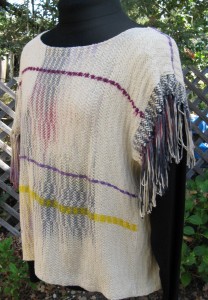
Indian Shirt
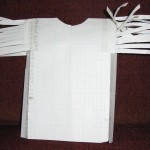
Indian Shirt Maquette
The second way I like to design is to weave a length of fabric, 8-10 yards, and then decide what it wants to be or how to use it. This can be a lot of fun because you have endless possibilities.
This is when I sometimes use a commercial pattern. Often, if I use a commercial pattern, I end up altering it to give it more of a designer look. It is easy to do.
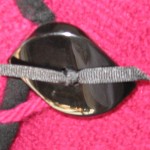
Sometimes a single button can make a statement.
The most important consideration is that your fabric be appropriate for your design. A great idea can fail if the fabric hand is wrong for the garment. The fabric knows what it wants to be! This is one of the basic rules of couture, according to Roberta Carr who wrote the book, Couture-The Art of Fine Sewing.
I usually underline all of my hand-woven garments. This stabilizes the fabric and eliminates the sag that hand-woven fabric can have. There are many different underlinings available. I usually use an iron-on knit; the weight depending on the garment. I then line the garment to hide the underlining and give the garment a clean finish.
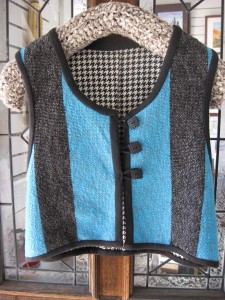
A lined vest- linings don't have to be boring!
It is important to me that my garments show evidence of effort. I think hand-woven should have machine stitching where it doesn’t show. Areas that show should be finished by hand.
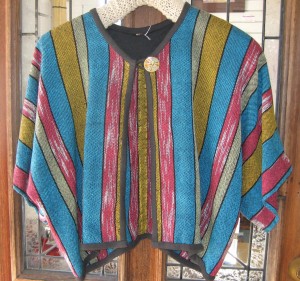
A jacket with handpainted bands throughout the fabric
Most of my fabrics are hand-painted so my designs are very simple shapes. I want the fabric to be the star!
Many of my garments are variations of the basic Kimono. There are many patterns for these available if designing your own is not what you want to do.
I have many ideas for garments dancing around in my head——- now where is my graph paper?
Click on Phyllis for another approach to designing and sewing.